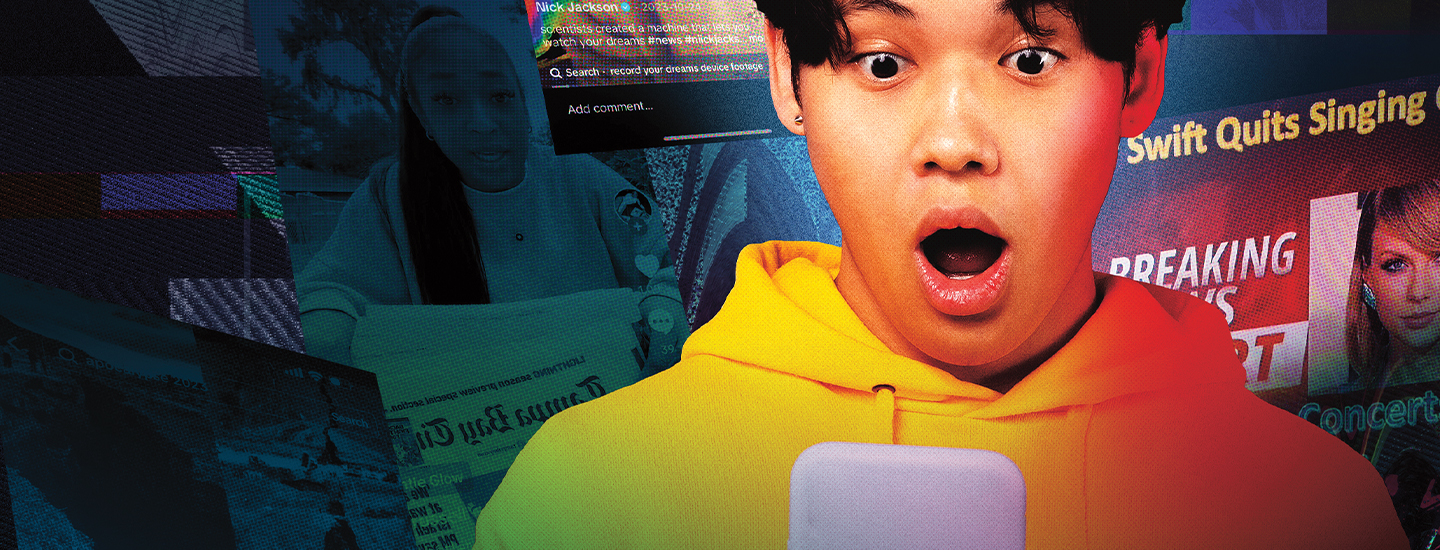Dylan Page calls himself the “News Daddy.” He recaps current events in clips with titles like “WW3 in 2024?!” His TikTok account has 10.5 million followers—that’s more than The New York Times, CNN, and The Washington Post combined.
As Page’s success shows, the way we get information is changing. Your parents’ generation turned to TV and newspapers. But more than half of teens ages 14 to 19 today get their news mainly from social media, according to a 2022 survey by the consulting firm Deloitte.
Keeping up with news on social media is convenient and fast. But in one study, fact-checking experts found that 20 percent of TikTok’s suggested videos about major news events contained misinformation—incorrect or misleading information. (False information that is deliberately spread to confuse or deceive people is called disinformation.)
That’s why you need to think critically about what you encounter online. Are you already a pro at telling fact from fiction? Answer the questions below to find out.

